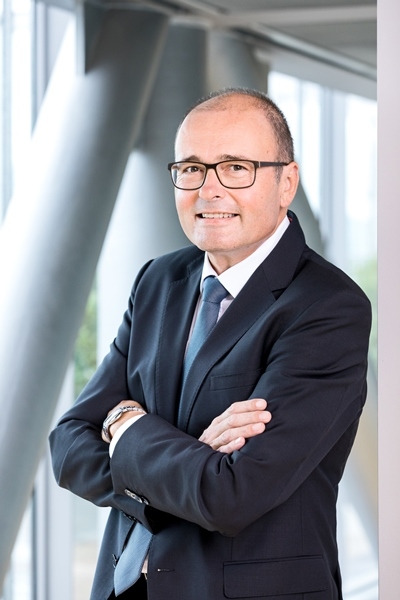Mr Prammer, at the IARC 2019 you will be speaking about current trends in terms of materials used in the steel industry. What are the main trends at the moment?
The automotive industry is voestalpine’s largest customer sector by far and accounts for one third of Group sales. When it comes to topics such as decarbonisation and the energy transition, we are all in the same boat, so to speak, and both the steel and the mobility sectors will be fundamentally impacted by these factors in the long term. It’s not simply a matter of how we intend to produce going forward, i.e. how to manufacture steel as closely to carbon-neutral as possible, but also how much added value the material can generate for our customers and which contribution it can make to driving the mobility of the future.
The automotive industry is a key sales market for the steelmaking sector. Major carmakers are under pressure to reduce their carbon emissions and are thus looking to make their vehicles as light as possible. In view of this fact, how can steel assert itself against lightweight metals such as aluminium?
The new EU targets for CO2 reduction by 2030 for cars, buses and trucks are not only quite ambitious technically, but also in terms of time, considering the conventional product development and production cycles of average models. We are helping to achieve this goal, for example, by developing high-strength steels and components made of light metal alloys. Moreover, we are working intensively on solutions for alternative drive systems such as electric mobility, for example by developing special electrical steel for motors or materials for making batteries. Despite being practically declared dead as a carmaking material not so long ago, steel will continue to play a key role going forward. Every material has its strong points, and competition between materials stimulates innovation.
How do you rate approaches such as Circular Economy or Life Cycle Assessment in this context?
Apart from their purely material properties, the overall ecological footprint of materials, products and value chains is becoming an increasingly significant aspect. The long-term EU strategy “A Clean Planet for All” also addresses these issues quite extensively. The question is how this can be implemented, because system boundaries, evaluation criteria, measurability and the like must first be developed, defined and made transparent. In my view, this is a very long-term goal, although the right one in principle. For example, the automotive industry has been the most important driver of the LCA, and in the overall life cycle analysis we see considerable advantages in the assessment of steel compared with other materials, such as its carbon footprint over the entire life cycle, energy consumption in production and reuse in production – specifically as scrap for making crude steel. At more than 25%, voestalpine uses an above-average share in its production process compared with the EU average (19%) or even China (10%), not to forget its practically infinite recyclability.
What is your impression regarding the role that the recyclability of materials currently plays in the automotive industry?
Today, it goes without saying that recycling is part of the economic cycle, and that includes the automotive industry. So-called recyclates, i.e. recycled materials, are being used with increasing frequency. When scrap metals are typically recycled, up to 100% of the car body steel gets used. This is where the greatest amount of recyclates are to be found – in new vehicles, too. Because these are already integrated in the production of new steels in the form of “processed scrap”, car manufacturers no longer have to worry about them. However, with plastics it’s a different story, as in contrast to steel and iron materials, plastic applications require separate testing and approval of the recycling material for each respective component. Recyclable materials may even be superior to new ones, as they may be less prone to dimensional and shape changes. For example, certain components are manufactured using recycled plastics. However, there are limits to the amount of recycled material that can be built into a car. Safety-related components such as crash structures or airbag-related components are not made of recyclates. The materials exhibit a slightly greater variance in vibration behaviour and elongation at break, which must be compensated for by the use of additives or taken into account when the component is produced. That’s why they are not so suitable for safety-related components.
The steel industry is also under pressure to reduce its CO2 emissions. Is the expansion of electric steel mills an option, or are new technologies, such as hydrogen-based steel production, more likely to be used?
If we, like the EU steel industry as a whole, by the way, commit ourselves to the climate targets, then the required CO2 reduction of at least 80% by 2050 will not be achievable with existing processes, i.e. the blast furnace/basic oxygen furnace route that is still dominant worldwide. Electric steel mills, or rather electric arc furnaces, will certainly make a contribution to CO2 reduction in the steel production chain in the future. Ultimately, however, the overall system of energy and raw materials management must always be taken into consideration – and this ultimately also involves economic availability. Irrespective of possible intermediate steps to replace coal with natural gas, for example, we are therefore working intensively on new metallurgical technologies based primarily on hydrogen. However, it is not so much an R&D issue as a broad implementation of new processes that ultimately depends on the management of energy and raw materials going forward. This is where we come back to your original question, as future concepts for the automotive industry, whether electric or hydrogen mobility, are also faced with the same challenge: It will require many times more energy, which needs to be provided at competitive cost with a stable supply and the most efficient infrastructure possible.










